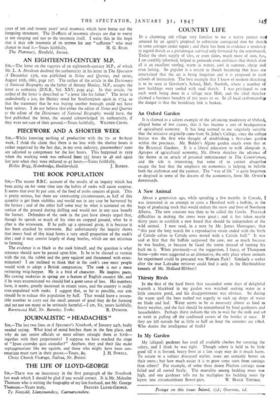THE ROOK POPULATION
Stk,—The recent B.B.C. account of the results of an inquiry which has been going on for some time into the habits of rooks will cause surprise. It seems that over 8c per cent. of the food of rooks consists of grain. This is pretty serious, but there are extenuating circumstances, as half of this quantity is got from stubbles and would not in any case be harvested by the farmer ; and of the other half some may be what is scattered on the surface of the ground during drilling and would not in any case benefit the farmer. Defenders of the rook in the past have always urged that, though he spends so much of his time on cropped ground, what he is after is the wireworm. If he pulls up a sprouted grain, it is because it has been attacked by wireworm. But unfortunately the inquiry shows that insect food of this kind forms a very small proportion of the rook's diet ; and it may consist largely of dung beetles, which are not injurious to farming.
The evidence is as black as the rook himself, and the question is what sentence should now be passed upon him. Is he to be classed as vermin with the rat, the rabbit and the grey squirrel and threatened with exter- mination? I am inclined to think that in the look's case most people would wish to adopt a British compromise. The rook is not a mere twittering twig-hopper. He is a • bird of character. He inspires poets. His cawing rookeries in spring are a- feature of English country life, and if he were exterminated we should feel a great sense of loss. His numbers have, it seems, greatly increased in recent years, and the country is really over-populated with rooks. I suggest that, so far as possible, our aim should be to reduce this population by half. That would leave a reason- able number to carry out the small amount of good they do for farming and yet not too many to be seriously harmful.—I am, Sir, yours faithfully,
Burn:wood Hall, Nr. Barnsley, Yorks. R. DYMOND.


































 Previous page
Previous page